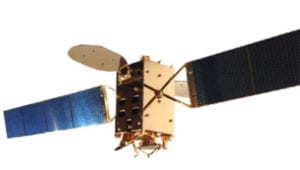
Venezuela’s only geostationary communications satellite, VENESAT-1 (also known as Simon Bolivar-1), has been tumbling in an unusable orbit since 13 March 2020 after it made a number of manoeuvres, presumably at the direction of its Venezuelan operator, according to Space News who spoke with commercial space situational awareness (SSA) providers ExoAnalytic Solutions and AGI.
VENESAT-1 was built for Venezuela’s Agencia Bolivariana para Actividades Espaciales (ABAE) by the China Great Wall Industry Corporation (CGWIC) and launched from China in late 2008, beginning operations in early 2009 after several months of on-orbit testing. VENESAT-1 was designed to provide satellite broadcasting and broadband services over a 15-year operational lifetime, and was due to be replaced in around 2024 by VENESAT-2 – also to be built and launched by CGWIC.
The troubled Venezuelan regime now faces a coverage gap in sovereign capability for satellite broadcasting and broadband internet services until VENESAT-2 is in service.
According to Space News, both ExoAnalytic Solutions and AGI SSA telescopes detected a “significant orbit change” for the VENESAT-1 satellite in the early hours of 13 March 2020 (US time). These commercial telescopes detected VENESAT-1 manouevre from its geostationary (GEO) orbital slot at 78 degrees West longitude, approximately 36,000 kilometres altitude above Venezuela. Several hours later VENESAT-1 was detected by these same telescopes to start tumbling westward.
According to executives from ExoAnalytic Solutions and AGI, VENESAT-1 is now tumbling in an elliptical orbit where its perigee (lowest point) and apogee (highest point) place it outside of the GEO arc where it and other communication satellites usually operate. Since 13 March VENESAT-1 has reportedly drifted 30 degrees from its original position, and executives say that if it drifts beyond 40 degrees then the satellite will no longer be in the line-of-sight of Venezuela. Should VENESAT-1 drift that far then it will be exceptionally challenging for ABAE engineers to recover the satellite, unless they can communicate with it from ground stations located in other countries.
The ExoAnalytic Solutions and AGI executives suspect that the ABAE operators were attempting to manoeuvre VENESAT-1 into a graveyard orbit beyond GEO when they lost control of the satellite. If this suspicion is borne out, then it suggests that VENESAT-1 had already ceased effective operations prior to the attempted manoeuvres and several years shy of its expected 15-year operational lifetime.
ABAE did not respond to any Space News requests for comment.
 SpaceWatch.Global An independent perspective on space
SpaceWatch.Global An independent perspective on space




